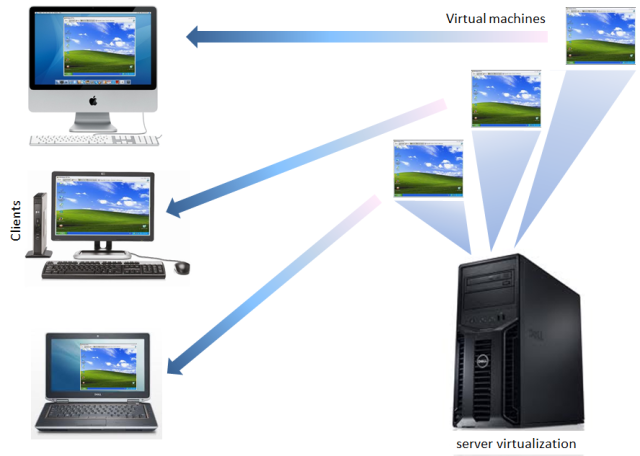For many businesses that are growing and expanding, setting up a virtual infrastructure is one of the best ways to ensure that your IT systems don’t fall behind the curve. These environments are easy to keep up to date, manage, and provide excellent redundancy options. They are also cost-effective, allowing you to easily deploy new servers as needed without having to necessarily buy new hardware each time.
What Is Server Virtualization?
A small company can run on just a few computers or laptops. But as soon as a company starts to expand it ends up requiring more and more machines to host software, employees, and other utilities in order to run efficiently. This can quickly grow unwieldy and expensive. By consolidating servers onto virtual machines you can fit more “virtual servers” or “virtual machines” on less hardware. A virtual environment is also much more efficient in terms of power, hardware resources, cost, and the ability to ensure everything is backed up.
Advantages Of Virtual Machines
Virtual servers are essentially software reproductions of separate, physical machines. Instead of having three physically different computers, you can run three virtual servers on one physical server. Each virtual server has its own software-based CPU, RAM, hard drive space, and operating system. Other computers see this virtual machine as its own separate entity, and even the virtual machine itself cannot tell that it is only software-based.

These virtual servers are much more flexible in terms of employees being able to log on from any desktop if need be. They are also very easy to image or back up; if something goes wrong such as file deletion, a virus or malware, or other issue it is very easy to restore the server to a prior state. This makes them a good option for those looking to put better network disaster recovery planning in place.
Virtual machines also allow companies to run different operating systems on one computer. Typically, the operating system will appear in a window on the main computer. They are also highly portable, allowing employees to run on the same environment even while on the road.
Advantages For Businesses Running Virtual Infrastructures
Hardware Utilization: Instead of dedicating physical machines each time you need to deploy a new server, you can place several servers on one machine. This allows you to ensure that all the hardware resources that you’ve spent money on are used to their full potential. Why have 3 machines running at 30% capacity each when you could create three virtual servers on one machine, using all its hardware resources efficiently? This saves companies lots of money in terms of hardware expense as well as even power consumption.
Faster Deployment: It’s much faster to deploy a virtual machine than to get a physical server or computer. This can be helpful for businesses that need to quickly react to new projects or needs.
Things To Keep In Mind When Deciding On A Virtual Environment
Although a virtual environment has many advantages, a business needs to have a good IT plan in place to ensure that things are organized and maintained in a structured way. Patches, updates, and security measures are all still required for each virtual machine, and having a good virtual infrastructure manager and competent IT team is key to ensuring that everything runs seamlessly.
Typically, a good IT team will be able to use server management software such as Veeam to constantly monitor the virtual servers and ensure that any downtime or issue is promptly found and fixed.
It’s also important to ensure that your company doesn’t end up with “sever sprawl”; when servers are so easy to deploy, it can create a situation where there are just too many. It’s important for companies to have standards that decide when a server is truly needed so that only the necessary amount of servers are activated.
Finding An IT Team To Manage Your Virtual Environment
AMA Networks specializes in helping businesses set up or transition to virtual infrastructures. We recently helped Spanugo set up a complete virtual environment, and currently help them maintain 50 virtual machines.
If you’re in the southern California or San Diego area and are interested in seeing if setting up a virtual environment is the right step for your business, give AMA Networks a call today for a free consultation!

